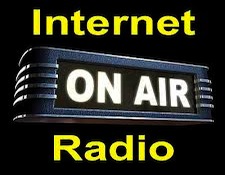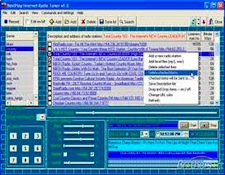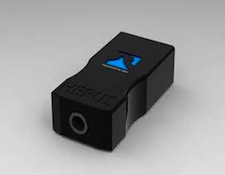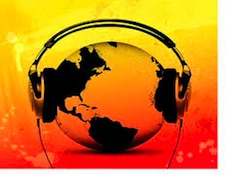It’s the time of year for saving money!
This morning as I perused one of the audio sites I frequent but refuse to post on, I saw this message, “I’ve decided to replace my analog tuner with Internet radio. What are the high quality hardware options to do this? This will be my first plunge into anything digital.
 I’ve read up on options for a few hours and my head is spinning. My goals are sound quality and reasonable cost ($300 or so, will stretch if I have to). I’m willing to sacrifice some convenience if that helps me meet the other criteria.
I’ve read up on options for a few hours and my head is spinning. My goals are sound quality and reasonable cost ($300 or so, will stretch if I have to). I’m willing to sacrifice some convenience if that helps me meet the other criteria.
Lastly, the sound quality I’m after is natural, easy going vs. an emphasis on details and bass/treble extension. I will be hooking this up to an Audio Note system — an M6 preamp, a P4 Silver Sig 300B amp and AN/E speakers.”
My initial response to this was – You’re already connected to the Internet with some sort of Internet savvy device, otherwise you couldn’t have posted your message, so in theory and practice you already own a very serviceable Internet radio tuner in your computer, tablet, or smartphone. What you need is a way to maximize the quality of the digital stream that your Internet-aware device can already access.
 My first “rule” of Internet radio listening is “Don’t bother with any radio station whose streaming rate isn’t at least 64 KBPS. 128 KBPS is better and if I have a choice of two stations with similar programming (such as two PBS stations) I always chose the one with a higher bit rate.
My first “rule” of Internet radio listening is “Don’t bother with any radio station whose streaming rate isn’t at least 64 KBPS. 128 KBPS is better and if I have a choice of two stations with similar programming (such as two PBS stations) I always chose the one with a higher bit rate.
Once you have a station that you like that broadcasts at a decent bit rate the next step is to try to maximize the audio quality on your end. You have both software and hardware that can accomplish this. Both Macs and PCs have playback software that attempts to give better sound quality than the universal default, iTunes. And most will also use your existing your iTunes library. I use a Mac and I’ve use Pure Music, Amarra, Decibel, Audirvana, Audirvana Plus and AudioGate. Audirvana and AudioGate are free programs, so if you have a Mac, those would be good starters. For PCs, Jriver has developed a good reputation for SQ and flexibility.
 On the hardware side there are many devices that convert the USB digital signal to an S/PDIF digital signal that can be sent to your existing DAC. Most USB to SPDIF converter boxes I’ve used have been priced in the $500 to $1500 range, but you could look at Hegel’s Super DAC ($299) which supports up to 96/24 and also seres as a USB to S/PDIF convertor. Or you can look into a USB DAC. You mentioned a $300 budget. If you can stretch it to $350 you could get the Resonessence Labs Herus DAC. It can handle anything up to a 64X DSD. Also if you travel, you can bring the Herus along since it’s roughly the size of a lipstick case. Ifi is another company worth looking at – they make a whole line of excellent sounding and budget-priced DACs and accessories. Other manufacturers who specialize in small portable USB DACs include AudioEngine and FIIO.
On the hardware side there are many devices that convert the USB digital signal to an S/PDIF digital signal that can be sent to your existing DAC. Most USB to SPDIF converter boxes I’ve used have been priced in the $500 to $1500 range, but you could look at Hegel’s Super DAC ($299) which supports up to 96/24 and also seres as a USB to S/PDIF convertor. Or you can look into a USB DAC. You mentioned a $300 budget. If you can stretch it to $350 you could get the Resonessence Labs Herus DAC. It can handle anything up to a 64X DSD. Also if you travel, you can bring the Herus along since it’s roughly the size of a lipstick case. Ifi is another company worth looking at – they make a whole line of excellent sounding and budget-priced DACs and accessories. Other manufacturers who specialize in small portable USB DACs include AudioEngine and FIIO.
 While I understand that the world of digital music reproduction can seem daunting to a neophyte, its really very simple. The gear’s job is to acquire a digital music file and then transform it into analog with as little degradation as possible. Some solutions to this problem ARE complex with multiple boxes and a patent office-full amount of proprietary technology, but many solutions are as simple as one box with a digital input and a pair of analog outputs. The most important thing to remember is the advice from The Hitchhikers Guide to the Universe – “Don’t Panic.”
While I understand that the world of digital music reproduction can seem daunting to a neophyte, its really very simple. The gear’s job is to acquire a digital music file and then transform it into analog with as little degradation as possible. Some solutions to this problem ARE complex with multiple boxes and a patent office-full amount of proprietary technology, but many solutions are as simple as one box with a digital input and a pair of analog outputs. The most important thing to remember is the advice from The Hitchhikers Guide to the Universe – “Don’t Panic.”





